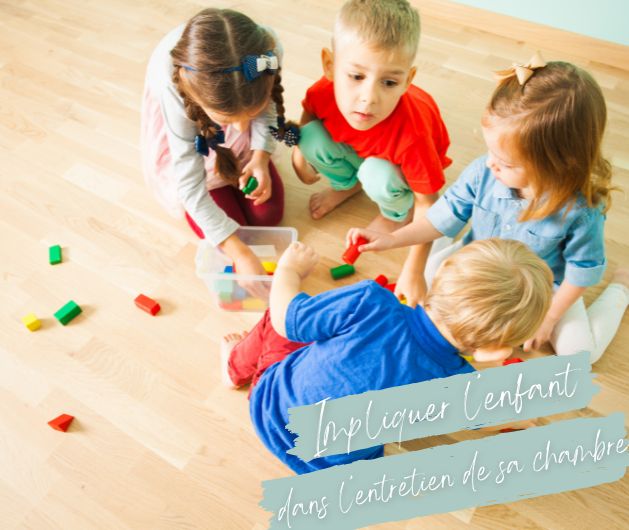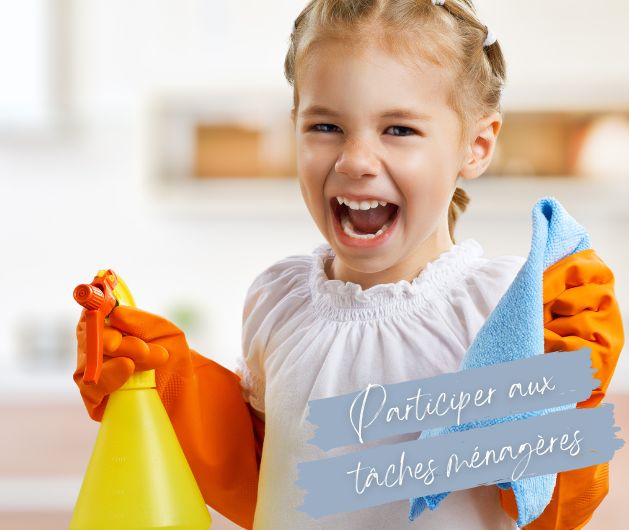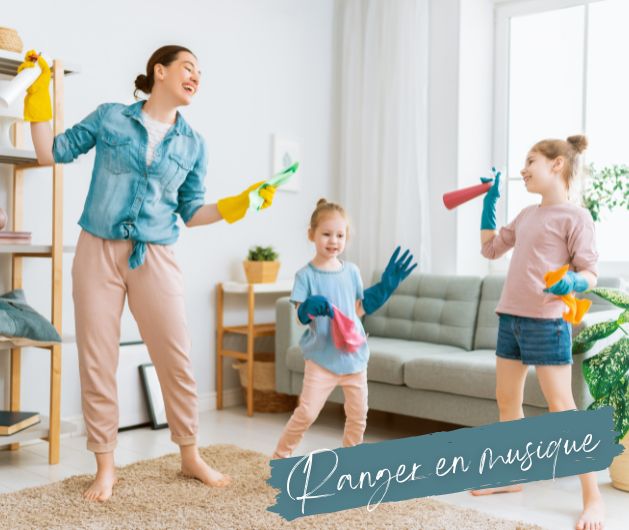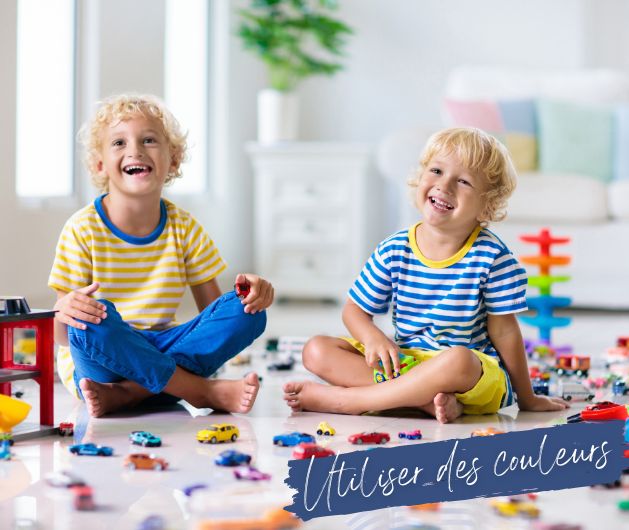How to involve the child in organizing and maintaining the room?

In most households, everyone needs to pitch in, especially when it comes to their own space. A child can therefore be sensitized from a very young age to tidying and maintaining their room. Depending on age, but also desire, it can be more or less difficult to help your child get involved. Fortunately, there are different methods that you can implement to help your child take care of their room.
Why involve children in household chores?

Involving children in household chores is not just about organization, it's also excellent for them. Indeed, a child who is encouraged to participate in household life will become more autonomous, gain self-confidence, and will also be more altruistic. By adapting tasks to age, you allow them to discover what daily life in a house is like and the work it represents. Your child thus takes an active part in household life. If they grumble a bit when setting the table or hanging up laundry, they will be grateful when they have to become independent and will be able to manage on their own.
The bedroom is an excellent starting point for involving the child in household chores. It is indeed their own space and one for which they are responsible. They will therefore be all the more able to show proactivity and autonomy in their universe.
How to get children involved in maintaining their room?
Tidying the room is not always easy to implement. Simply telling your child "clean your room" is likely to be unproductive if they don't know how to go about it. Indeed, they will need methods and tips to know how to organize. These can vary depending on your child's age.
Involve your child in decision-making
Rather than reorganizing their entire children's dresser, involve them in decision-making concerning both their bedroom dresser and their entire universe. The goal is for your child to understand why things are organized in this way in their children's bedroom dresser as well as in their other furniture. As always, put communication at the heart of your project.
Provide suitable storage solutions
To ensure your child gets involved in organizing their room, they need access to suitable storage solutions. Opt for practical furniture like a children's dresser with large drawers such as our ICONE dresser for example, a bedroom storage unit with storage cubes, a bed with storage, etc. Everything should be practical, fun, and of course, at their height to be used properly. That's why it's important to know how to best organize a child's room.
Create a routine
If you want good habits to take root, you'll need to implement a routine so that your child gets used to tidying and maintaining their room. This can be a small task per day or per week. The frequency doesn't matter as much as the repetition. You can even create a real schedule so that the whole family can keep track and know where they stand.
Make things fun and enjoyable
Tidying doesn't need to be a chore to be effective. You can certainly make this task enjoyable. For example, suggest to your child to have a race to see who can tidy their room first between them and you, or with their siblings. You can also opt for tidying with music so that everyone sings and dances while completing their mission.


Use labels and colors
With younger children, using labels and colors makes things even clearer. Opt for an easily identifiable storage method so that your child can adapt to it more easily. Classify toys by themes (cars, blocks, dolls...) or by colors, clothes by type, etc. If your storage system is easily identifiable, your child will take even more pleasure in tidying up.
Set an example
If you ask your child to tidy their room, you must also show organization in the house. First, establish good habits personally and impose discipline on yourself if you have trouble keeping an organized interior. There are many books on the subject that will provide you with real keys to daily organization.
Be educational
Take the time to explain to your child the importance of tidying, cleaning, and taking care of their belongings. If they don't understand the approach, they're unlikely to get involved. The same goes for the different tasks to be carried out, take the time on several occasions to explain to your child what you expect and help them at first. Tidying and organizing are not meant to be painful, but simply part of daily life.
Reward efforts
Don't hesitate to reward your child's efforts, especially if the task is complex for them. Praise, stars on a chart, small rewards from time to time - it's up to you to decide what you think is most appropriate. Never forget to congratulate your child for their involvement and stay encouraging no matter what.
When certain tasks are mastered and become part of the daily routine, you can then propose new missions!













 How to attach a headboard (with or without drilling): quick and effective soluti
How to attach a headboard (with or without drilling): quick and effective soluti
 Waterproof sheet or mattress protector: the best solution by age group
Waterproof sheet or mattress protector: the best solution by age group
 27 Original, Useful, and Trendy Christmas Ideas for Teens 2025
27 Original, Useful, and Trendy Christmas Ideas for Teens 2025
 Christmas Activities for Baby: Creative Ideas for Home & Daycare
Christmas Activities for Baby: Creative Ideas for Home & Daycare
 When to put up Christmas decorations for extended magic?
When to put up Christmas decorations for extended magic?